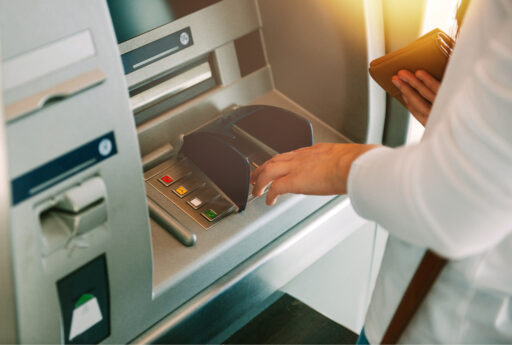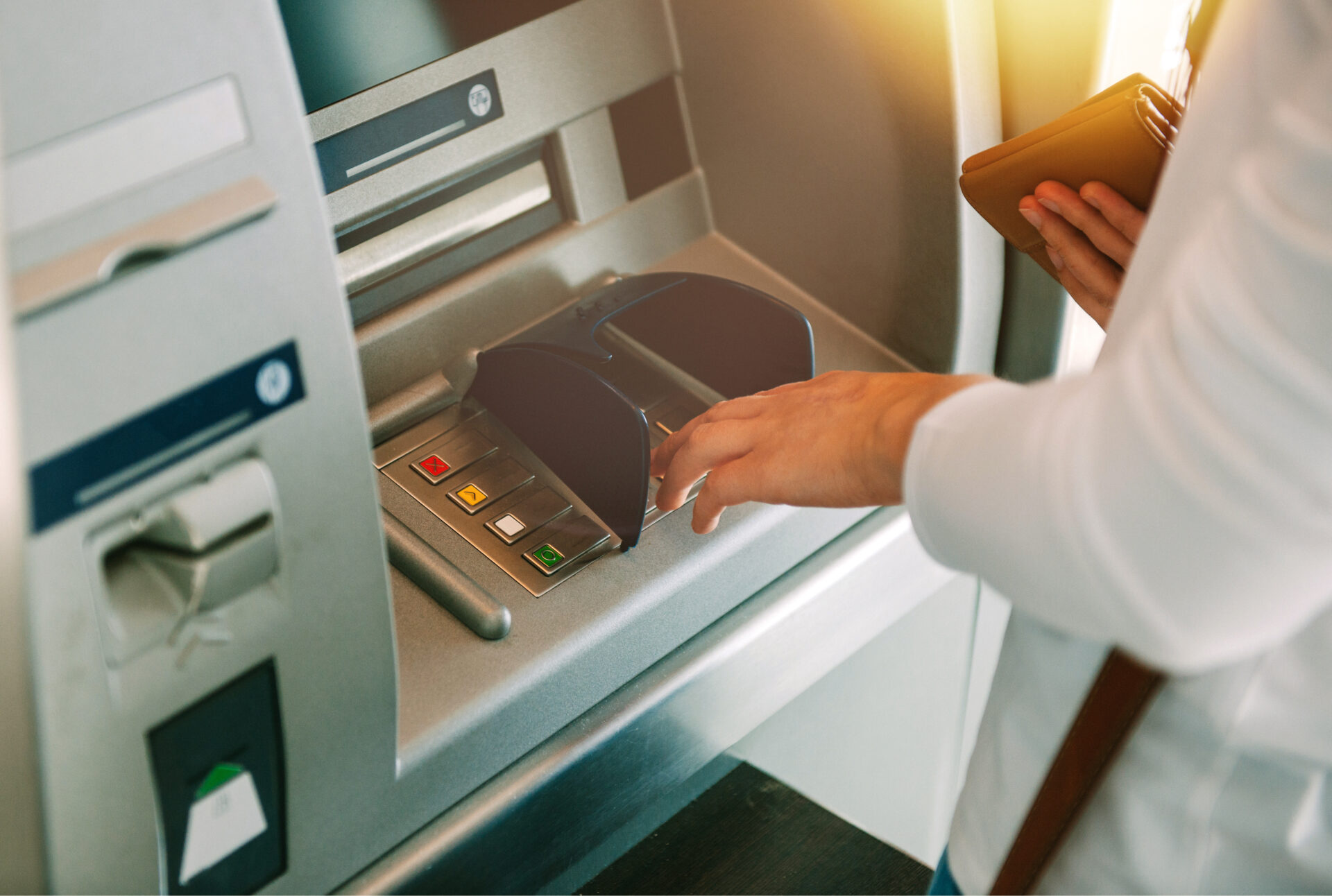*Disclaimer: This content is for informational purposes only and should not be taken as financial advice. Wallet Monkey may earn a commission from partner links in this article. Rates and offers are accurate as of publication but may change over time.
Ever needed quick cash and thought, “Maybe I’ll just pull some money from my credit card?” That’s exactly what a cash advance on a credit card lets you do, but before you head to the nearest ATM, there are a few important things you should know.
In this post, we’ll break down exactly what a credit card cash advance is, how it works, what it really costs you, and whether it’s ever a good idea.
Table of Contents
What Is a Cash Advance On a Credit Card
A cash advance is when you use your credit card to borrow cash instead of buying something. You can usually do this at an ATM, a bank branch, or even by using convenience checks your card issuer sends you.
So instead of charging a purchase, you’re pulling out actual money, and your credit card company treats this differently than a regular transaction.
Common Ways to Take a Cash Advance:
- Withdrawing from an ATM using your credit card PIN
- Requesting a cash advance from a bank teller
- Using special checks issued by your credit card provider
While it might sound convenient, it’s not as straightforward (or cheap) as swiping your card for groceries.
How Does a Credit Card Cash Advance Work?
When you take out a cash advance credit card transaction, you’re borrowing against your credit limit, but with higher costs and fewer protections.
Here’s what typically happens:
- No grace period: Interest starts building immediately; no waiting period like with regular purchases.
- Higher interest rates: Most credit cards charge a higher APR for cash advances, often around 25%–30% or more.
- Cash advance fee: You’ll usually pay a flat fee or a percentage of the amount you withdraw (often 3%–5%).
For example, if you take out $500, you could pay a $25 fee plus interest that starts stacking up right away. That adds up fast.
How Much Does a Cash Advance On a Credit Card Cost?
Here’s a breakdown with real numbers. Say you withdraw $500 as a cash advance, this is what you might be looking at:
- Cash advance fee (5%): $25
- Immediate interest: Starts building the day you take the money
- APR (say 29.99%): If it takes you two months to pay it off, you could owe roughly $30 more in interest
Total estimated cost for a $500 advance over two months = $55+
And that’s assuming no late payments or added fees. If you only make minimum payments, it could cost you much more.
Do Credit Card Cash Advances Affect Credit?
Yes, but maybe not in the way you’d expect. A cash advance credit card transaction doesn’t show up on your credit report as “cash,” so lenders won’t see it labeled that way. But it can still affect your score indirectly.
Here’s how:
- Increases credit utilization: Since cash advances count toward your balance, they can drive up your credit usage ratio, which is a major factor in your credit score.
- Adds to your debt load: If you carry the balance month to month, it increases your overall debt.
- Interest can lead to missed payments: If the balance grows faster than you can pay it off, it might cause late or missed payments, both credit score killers.
So while pulling cash doesn’t directly ding your score, the way it affects your balance and payment history definitely can.
Cash Advance Credit Card Alternatives
Before turning to your credit card for cash, explore some other options:
- 0% APR credit cards: Great for purchases if you need some time to pay
- Personal loans: Lower interest and more predictable terms
- Borrow from friends/family: Not always easy, but could save you a lot in the long run
- Credit union payday alternative loans (PALs): Much cheaper than payday loans
- Call your card issuer: Ask if they offer hardship programs or payment plans
- Explore Cash Advance Apps: In 2025, several apps, like True Finance, Earnin, Klover, and MoneyLion, offer short-term cash advances with no interest, making them a smart alternative to traditional credit card advances.
Final Thoughts: Are Credit Card Cash Advances Worth the Fees?
So, what is a cash advance on a credit card? It’s a quick way to get cash using your credit limit, but it can come at a steep cost.
Unless it’s an emergency and you have no other options, there are better, smarter ways to access money when you need it most that won’t put you in a deeper hole. Always read the fine print on your card agreement so you know what you’re really getting into.
Bottom line: Just because you can take a cash advance doesn’t mean you should.
🚀 Explore, Learn & Grow with Wallet Monkey!
Unlock the latest tips, tricks, and expert insights on money management, credit, and more. Subscribe now and stay ahead of the curve in personal finance!
Subscribe NowFAQs About Crefit Card Cash Advances
1. Can I use a credit card cash advance to pay other credit card bills?
In most cases, no. You can’t directly use a cash advance to pay off another credit card through a standard transaction. However, you could technically withdraw the cash and use it to make a payment, but this is a very expensive workaround and usually not recommended due to the high fees and interest.
2. Do all credit cards allow cash advances?
Not necessarily. Some credit cards come with cash advance restrictions or don’t offer the feature at all. You’ll need to check your card’s terms to see if a cash advance credit card limit is available, and what the maximum withdrawal amount is.
3. Can I request a higher cash advance limit on my credit card?
Yes, but approval isn’t guaranteed. Some issuers allow you to request an increase to your cash advance limit separately from your overall credit limit. You’ll usually need to call customer service, and they may evaluate your payment history, credit score, and income before making a decision.
4. Is a cash advance different from a balance transfer?
Yes, very different. A cash advance gives you actual cash (usually at a high interest rate), while a balance transfer moves existing debt from one card to another, often with a promotional 0% APR. If you’re trying to consolidate debt, a balance transfer is usually the better option.
5. What happens if I only make the minimum payment on a cash advance?
If you only pay the minimum, you’ll be stuck paying high interest for months, maybe even years, especially since cash advances start accruing interest immediately. This can trap you in a cycle of debt, so it’s always best to pay off a cash advance as quickly as possible.
Top Relevant Articles
Best Capital One Travel Credit Card
Compare top Capital One travel cards and find the right one for your next adventure.
Capital One Venture X Review
Is Venture X worth the premium? Dive into the features, perks, and real-world value.
American Express Credit Card Guide
Explore every Amex card in one place—features, comparisons, and tips to maximize rewards.
*Editorial Disclaimer: The information provided in this article is for educational purposes only and does not constitute financial, investment, or legal advice. Wallet Monkey aims to provide accurate and up-to-date information, but we encourage readers to verify details directly with financial institutions. Some of the products mentioned may be from Wallet Monkey partners, which may influence how they appear. However, our recommendations are based solely on what we believe provides genuine value to readers.






